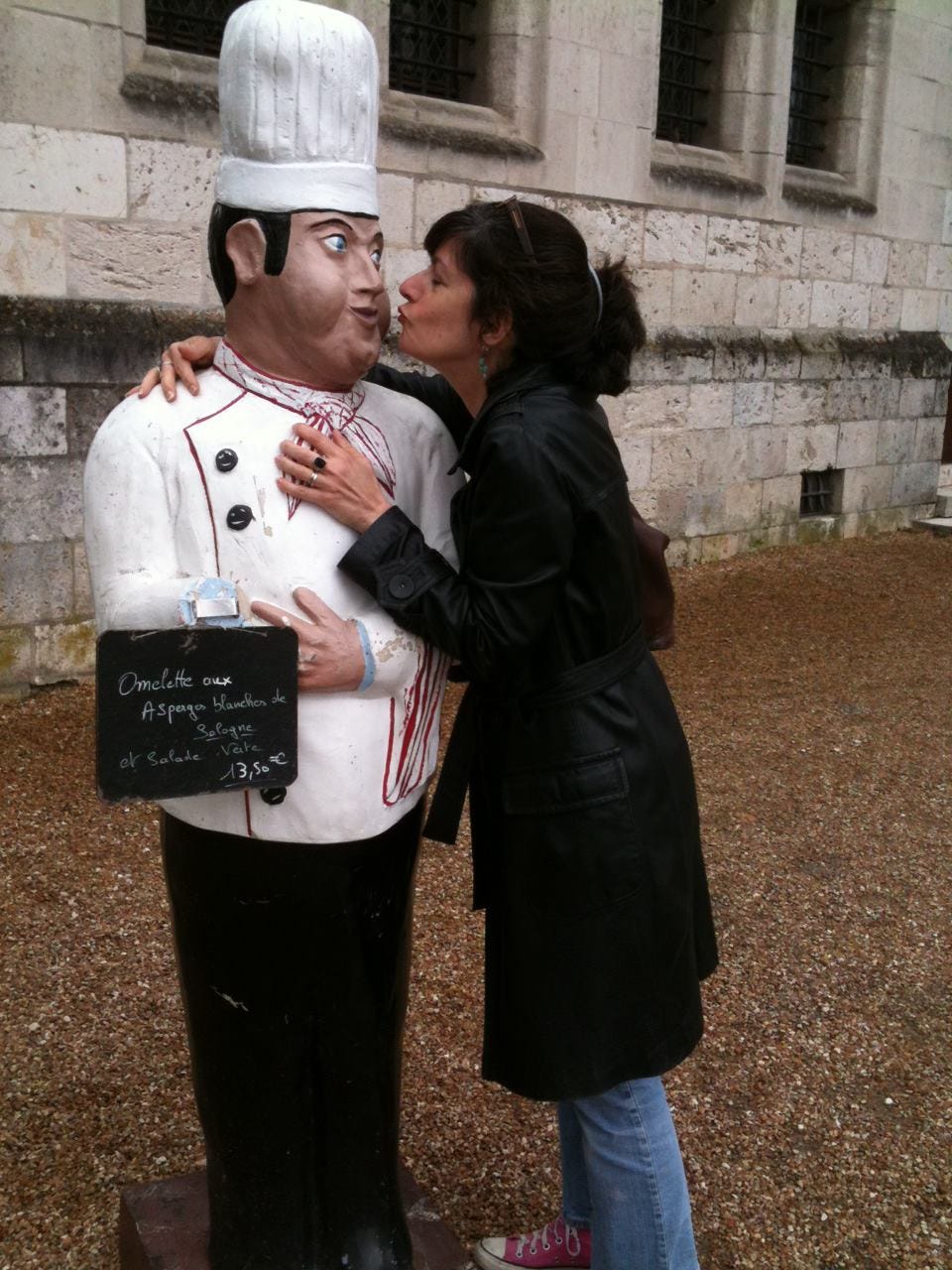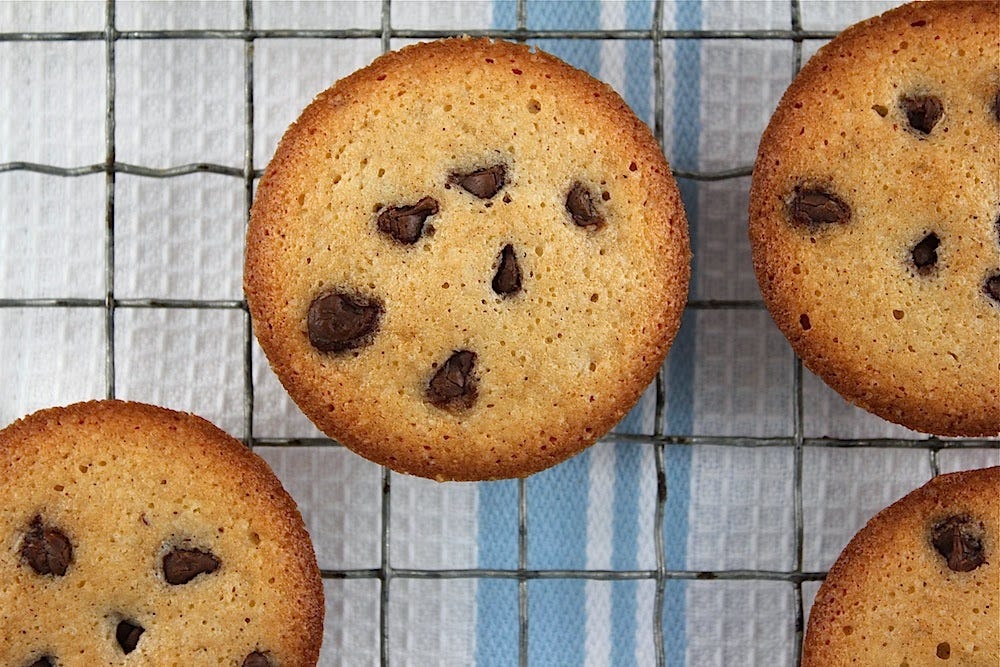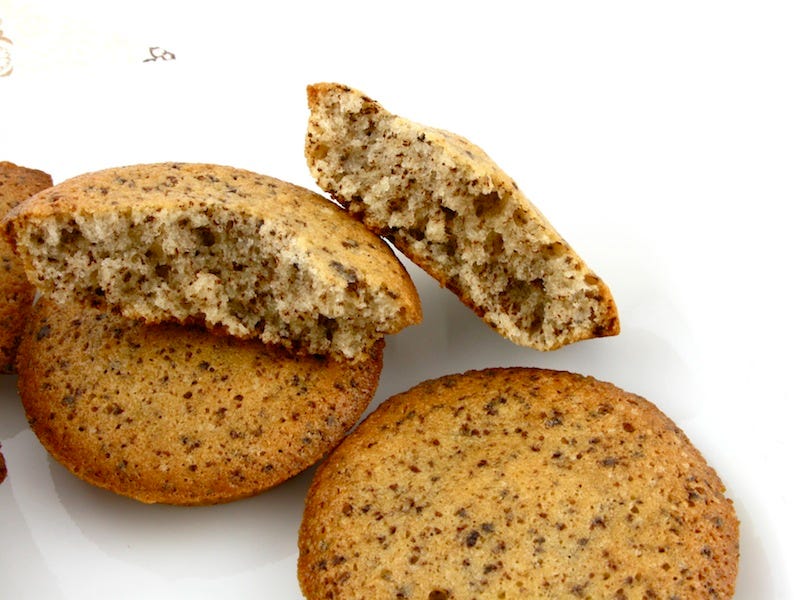Financiers
And the answer to the question: why French?
"Light, refined, learned and noble, harmonious and orderly, clear and logical, the cooking of France is, in some strange manner, intimately linked to the genius of her greatest men." -Marcel Rouff, 1877-1936, author and gastronome
My first job in France was for a small organization called Paris en Cuisine. Organization is a big word for one man, Robert Noah, founder and owner of Paris en Cuisine, and me, his sole assistant. My job consisted in taking our clients in small groups of only 2 to 6 inside the kitchens of Paris’ most acclaimed Michelin-starred restaurants, bakeries, pastry and chocolate shops, cheese and wine cellars for visits, tastings, demonstrations, and private classes, acting as both guide and interpreter. I also worked 1 or 2 days a week as interpreter for the intensive 9-month anglophone program at Paris’ world-renowned culinary school École Grégoire-Ferrandi for students from around the world wanting to earn the French CAP cooking diploma.
Over the course of the several years I worked for PeC, I learned the ins and outs of French cuisine, the vocabulary and techniques, the dishes and foods, the who's who of chefs and restaurants, and, in parallel on my own, absolutely everything I could about the history of this food-rich culture.
Working with Michelin-starred chefs and in a professional cooking school reinforced my preconceived notion of what French cooking was when I arrived in France only a very short time earlier, the notion I had picked up from American food magazines and living in Philadelphia and New York of the 1980s when French became all the rage: that it was fancy, complicated, a difficult labyrinth of technique, too sophisticated and costly for every day. Even the recipes in my well-thumbed copy of Julia Child’s Mastering the Art of French Cooking were intimidating in the sheer length of the recipes and the number of ingredients.
And then I married into a working class French family and my assumption of what French cuisine was was turned on its head.
Historically, French cuisine developed and traveled through time along 2 parallel paths: what was being prepared in royal/aristocratic/noble kitchens, complex, refined dishes made of expensive, often rare ingredients, and the food being prepared in everyone else’s kitchens, what is generously referred to as a poor man’s feast, economical, and easy and quick to put together using what was readily available locally and in season, left to simmer or bake while the family went back to work. The first of these 2 styles of cuisine, what I call royal cooking, is what became, after the French revolution, in France and soon after in America, restaurant cooking. Peasant cooking, made in most home kitchens of the working, middle, and eventually bourgeois classes, remained pretty much what it always had been, even as the recipes evolved somewhat over time to include a wider variety of cuts of meat, vegetables, and fruits.
This second food culture is what I had become immersed in and what I’ve been cooking, alongside my husband who himself began cooking alongside his mom when he was about 6 and then for his family by the time he was a teen, since I settled in France. I spent years watching the French cook, family and friends, in their homes, for family and friends. I celebrated holidays with them, asked questions, and read both cookbooks and history books to understand as best I could the whats, whys, and hows of French cuisine in general, and every dish, every pastry in particular. And I cooked and I baked.
And in 2008, I began to write about French food (and the food of the various other cultures that live side by side in our multicultural home) and transmit the recipes. I wanted to share this other, this everyday cuisine with Americans and bust the myth that French cooking was only the fancy, the complicated, the rich, and the sophisticated. I wanted to show people that it was also rustic, frugal, generous, and simple. I wanted to explain, by briefly and concisely telling its history, why each dish is made the way it is, with the ingredients it's made of, and when and how it is served and shared, not the magazine version of French food. I love giving my readers a unique peek, from my curious American perspective, into a real French kitchen and bringing them truly authentic recipes.
The question I’m asking myself and you now is: would this make a great cookbook, one that you would want to own and cook from? And do the curious stories behind the food interest you as much as they fascinate me?
Financiers
Financiers are delicate little tea cakes, cousin to the madeleine yet very different. Financiers are made from finely ground nuts, most often almonds but also hazelnuts, pistachios, whatever you like, a dash of flour, sugar, and egg whites whipped until thick. They are a curious treat, tender like a soft sponge on the inside, the outside slightly chewy with a satisfying crisp “crust”. The origins of this pâtisserie can be traced back to the 17th century and the convent of the Order of the Visitation in the city of Nancy. The original cakes were round and flat and named after the nuns of the order, les Visitandines, and thought to be made to compensate for the prohibition of meat consumption in the convents… or it could be that they were simply created and made to use up the egg whites leftover from eggs after the yolks were used as binder for the nuns’ paints. At the end of the 19th century, les Visitandines were discovered by a Parisian pastry chef named Lasne whose business was close to the Bourse, the stock exchange, in the French capital. He quickly added these delicate cookies to his repertoire, eventually modifying the round shape into a rectangle to resemble a gold ingot, and baptizing it after his clients, les financiers.
Classic Almond Financiers with chocolate chips or berries
1 cup (90 grams) finely ground almonds
5 tablespoons (50 grams) flour
¼ cup + 1 tablespoon + 1 teaspoon (75 grams) granulated white sugar
¼ cup + 1 tablespoon + 1 teaspoon (75 grams) granulated brown sugar (cassonade or demerara)
¼ teaspoon ground cinnamon, optional
5 1/3 tablespoon (75 g) unsalted butter + butter for molds
4 large egg whites
½ teaspoon vanilla
Pinch salt
1 tablespoon or more each mini chocolate chips and blueberries (I use frozen wild blueberries when fresh are unavailable)
Preheat the oven to 400°F (200°C). Generously butter 16 traditional (approximately 3 ¾ x 1 ¾ -inch rectangular/ 9 ½ x 4 ½-cm) Financier molds – or 8 Financier molds + 12 approximately 2-inch (5 cm) round shallow molds. This is most easily done with melted and cooled unsalted butter and a pastry brush.
Slowly melt the butter over low heat and remove from the heat just as the last bit of butter is melting. Swirl a few seconds until the butter is completely melted and set aside to cool briefly. Alternately, this can be done in a heatproof bowl in the microwave.
Beat the egg whites - adding a few grains of salt and just 2 or 3 drops lemon juice will help stabilize the beaten whites like cream of tartar does - until stiff peaks hold.
In a large mixing bowl, combine and whisk together the ground almonds, the flour, both sugars, the cinnamon, and a pinch of salt. Fold in the stiff egg whites until just blended (begin by folding some of the dry ingredients into the egg whites, adding a few tablespoons of the dry at a time, then turn it into the remaining dry ingredients and folding in just until smooth; do not overfold); no more pockets of dry ingredients or lumps of whites should remain.
Fold in the butter a little at a time – in about 5 additions, slowly pouring the melted butter down the side of the bowl rather than right into the middle of the batter, folding in each addition completely but briefly before adding more. Add the vanilla extract with the last addition of the butter.
Spoon the batter into the molds, filling each mold no more than ¾ full. Gently spread evenly in each mold if needed, or tip the mold back and forth so the batter fills the molds.
Drop half a dozen mini chips or 3 or 4 berries on top of each batter-filled mold.
Bake for 15 to 20 minutes until the financiers are puffed and evenly golden brown. Remove from the oven, allow to cool for a few minutes and then gently pop the financiers out of the molds and cool completely on cooling racks.
Chocolate Tweed Cinnamon Hazelnut Financiers
This is a variation on the classic financier recipe that I love, using hazelnuts instead of almonds and gently folding in finely grated dark chocolate which gives it this “tweedy” look as well as a great chocolate flavor, just enough so that it doesn't cover up the flavor of the nuts and cinnamon.
Simply replace the finely ground almonds with the same quantity finely ground hazelnuts and gently but completely fold in 3 tablespoons grated or finely chopped semisweet or bittersweet chocolate into the batter just before filling the molds.
Thank you for subscribing to my Substack, Jamie Schler’s Newsletter, where I share my (mostly French) recipes, my hotel and my jams, my projects, and the stories of my life. You can support my work by sharing the link to my Substack with your friends, family, and your social media followers. I’m so glad that you’re here.












So late to this party, but YES I would love this cookbook. :)
I would love such a cookbook - the stories behind the food are some of my favorite!
Question - would the financiers work in a plain old muffin tin? I have all the ingredients but not the special tin, would love to make them today.